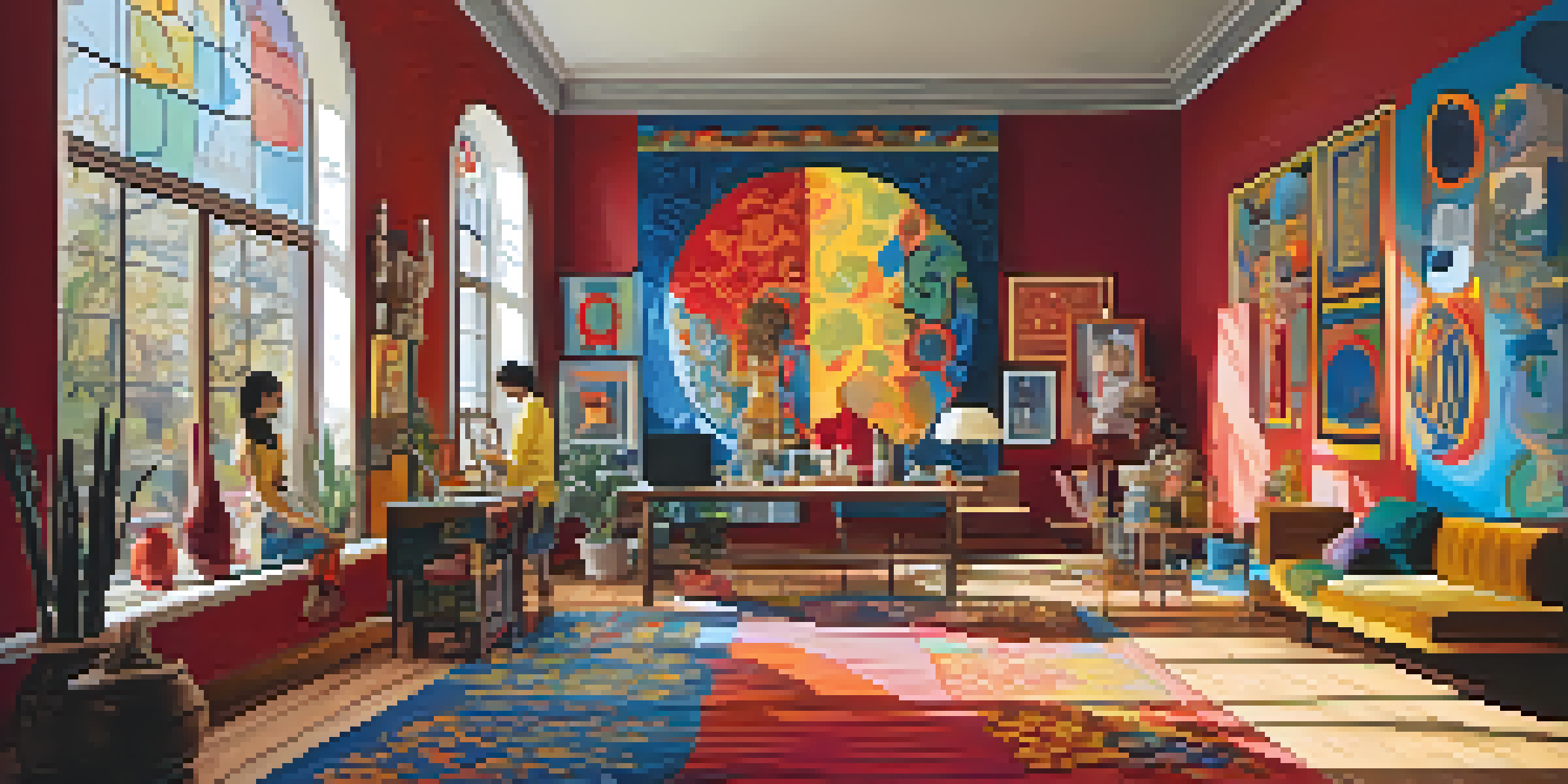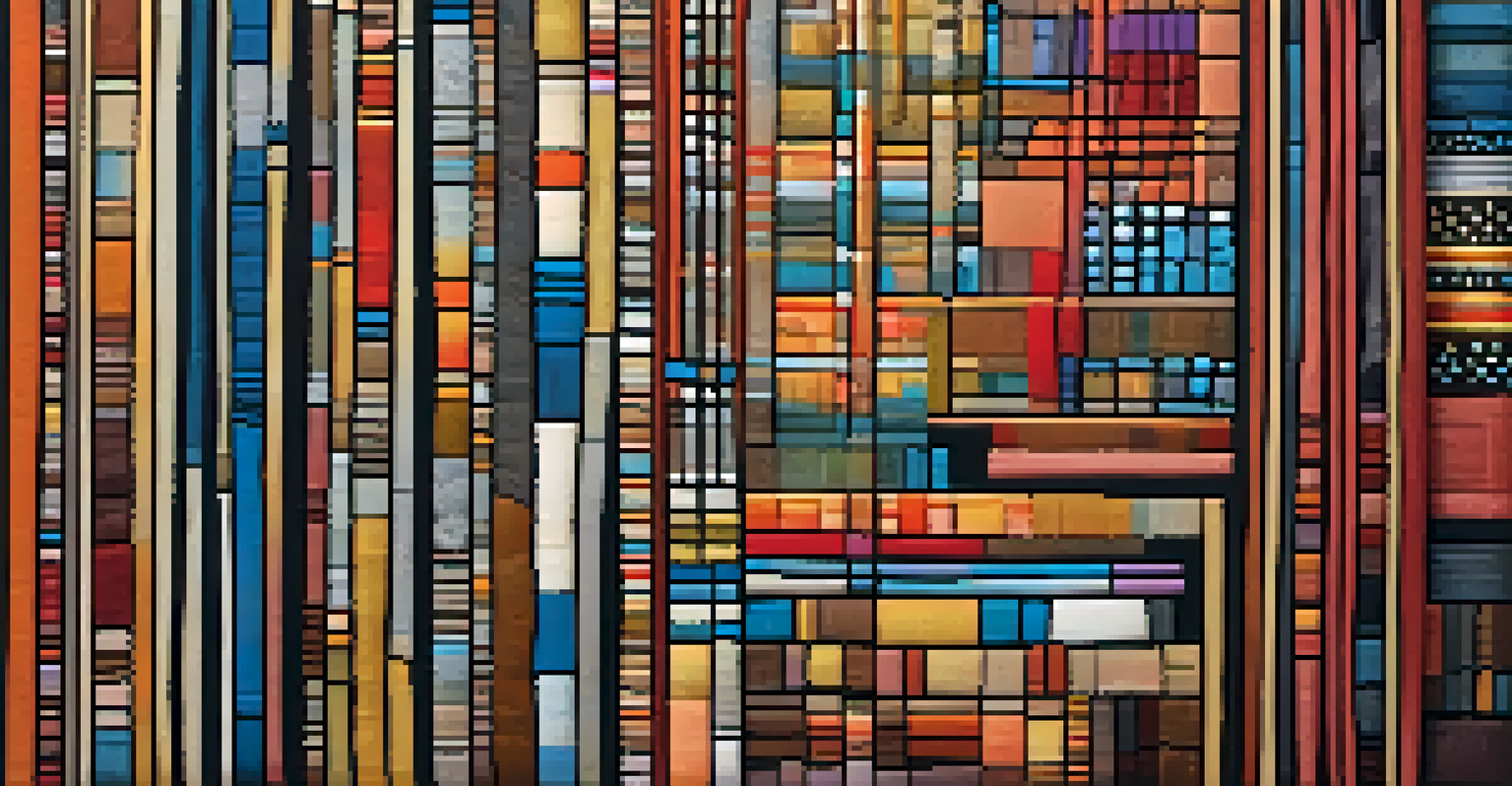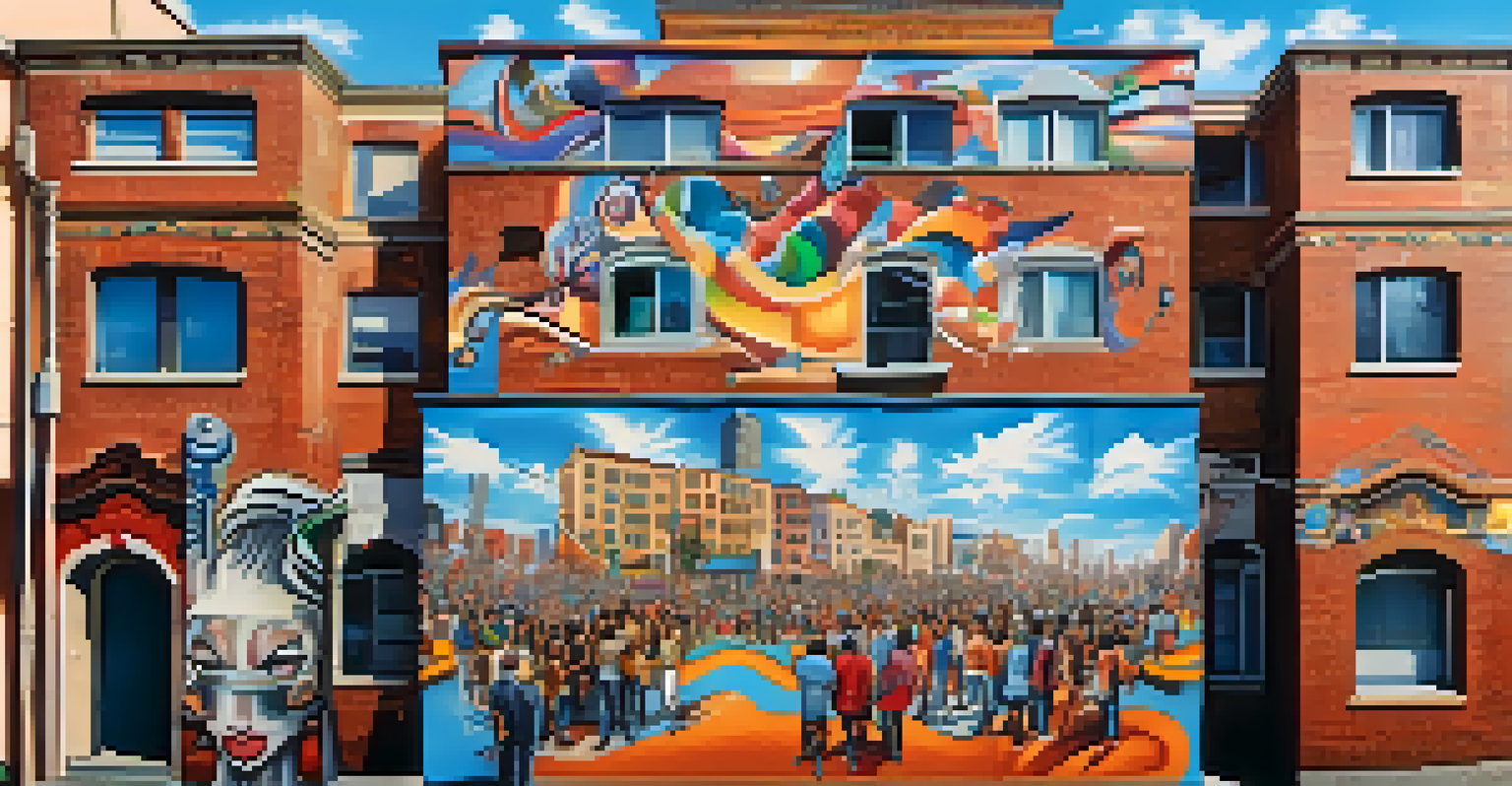Cultural Identity in Paintings: A Study of Modern Artists

Understanding Cultural Identity in Art
Cultural identity is a rich tapestry woven from the threads of tradition, history, and personal experience. In paintings, this identity often manifests through symbols, colors, and styles that reflect an artist's background. By exploring their heritage, artists can create works that resonate with both personal and communal narratives.
Art is a way of expressing our cultural identities and sharing them with the world.
For instance, a modern artist might draw on traditional motifs from their culture, blending them with contemporary techniques to create something entirely unique. This fusion not only honors their roots but also invites broader audiences to engage with their cultural stories. Thus, understanding cultural identity in art helps us appreciate the depth and diversity of human experience.
Ultimately, this exploration allows viewers to connect with artworks on a deeper level, fostering empathy and understanding across different cultural landscapes. It encourages us to see beyond the canvas and appreciate the stories that shape our world.
The Role of Modern Artists in Cultural Expression
Modern artists play a pivotal role in expressing and shaping cultural identity through their work. By using their platform, they can challenge stereotypes and bring attention to underrepresented narratives. Their paintings often serve as a mirror reflecting societal issues, allowing viewers to confront and question their own biases.

Take, for example, the work of an artist who addresses immigration through bold imagery and vivid storytelling. Their paintings might depict their own experiences or those of others, bringing to light the complexities of cultural identity in today's world. Such artworks can spark critical dialogue and inspire change, highlighting the power of art as a tool for social commentary.
Cultural Identity in Art Matters
Cultural identity enriches art by incorporating symbols, colors, and styles that resonate with personal and communal narratives.
Through their unique perspectives, these artists not only celebrate their heritage but also enrich the broader cultural discourse. Their contributions remind us that art is not just an aesthetic experience; it is a profound means of communication that transcends language and borders.
Case Studies: Artists Embracing Cultural Identity
Examining specific artists can illuminate how cultural identity is depicted in modern painting. Consider the work of Kehinde Wiley, who reimagines classical portraiture by featuring people of color in regal poses. By doing so, he challenges traditional narratives and asserts the importance of representation in art.
The role of the artist is to ask questions, not to answer them.
Similarly, Frida Kahlo's self-portraits are steeped in her Mexican heritage, reflecting her personal struggles and cultural pride. Her use of vibrant colors and symbolism invites viewers into her world, making her identity a central theme of her work. Through these examples, we see how artists can channel their cultural experiences into powerful visual statements.
These artists not only celebrate their own identities but also invite others to reflect on their cultural backgrounds. Their work serves as a reminder that cultural identity is not static; it evolves and transforms, much like the art itself.
Techniques Used to Convey Cultural Identity
The techniques modern artists employ to express cultural identity are as varied as the cultures they represent. Many artists utilize specific colors, patterns, and materials that hold cultural significance to them. For instance, traditional textile patterns can be integrated into contemporary paintings, creating a dialogue between past and present.
Moreover, mixed media is often used to enhance storytelling, allowing artists to incorporate elements like fabric, photographs, or found objects. This approach not only enriches the visual experience but also adds layers of meaning that invite deeper exploration. It’s a way to bridge different cultural narratives, creating a tapestry of experiences on the canvas.
Modern Artists Challenge Norms
Contemporary artists play a crucial role in addressing stereotypes and fostering dialogue about cultural identity through their work.
As a result, these techniques not only celebrate cultural identity but also challenge viewers to think critically about what identity means in a globalized world. They encourage us to appreciate the nuances of cultural expression and the ways it can evolve over time.
Cultural Identity and Globalization in Art
Globalization has significantly influenced how cultural identity is portrayed in modern art. As artists travel and collaborate across borders, they often blend elements from various cultures, creating hybrid forms of expression. This phenomenon can be seen in paintings that mix traditional styles with contemporary themes, reflecting the interconnectedness of our world.
For instance, an artist may incorporate street art techniques from urban environments with traditional motifs from their homeland. This merging not only highlights the fluidity of cultural identity but also speaks to the realities of modern life, where cultures continually intersect and interact.
In this context, understanding cultural identity becomes a dynamic process. It reminds us that while artists honor their roots, they are also responding to the world around them, creating artworks that speak to a shared human experience.
The Impact of Cultural Identity on Audience Reception
The way cultural identity is expressed in art can greatly influence how audiences perceive and connect with the work. When viewers see their own cultural experiences reflected in art, it fosters a sense of belonging and validation. This connection can be particularly powerful in a multicultural society, where diverse narratives coexist.
Conversely, artworks that challenge or expand our understanding of cultural identity can provoke thought and discussion. For example, a painting that confronts cultural stereotypes may elicit strong reactions, prompting viewers to reconsider their own views. This interaction between art and audience can lead to greater awareness and appreciation of different cultural perspectives.
Globalization Shapes Artistic Expression
Globalization leads to hybrid forms of art, blending traditional and contemporary styles to reflect the interconnectedness of cultures.
Ultimately, the reception of culturally inspired art underscores the importance of representation. It reminds us that diverse voices enrich the artistic landscape, making it more inclusive and reflective of our shared humanity.
Future Directions in Cultural Identity and Art
Looking ahead, the relationship between cultural identity and modern art continues to evolve. As new technologies and platforms emerge, artists have more opportunities to explore and express their identities in innovative ways. Digital art, for example, allows for interactive experiences that can engage audiences in unprecedented manners.
Moreover, as global conversations around identity, race, and representation intensify, artists are increasingly using their work to address these critical issues. This trend highlights the ongoing relevance of cultural identity in the contemporary art scene, ensuring that it remains a vital area of exploration.

As we move forward, it will be fascinating to see how artists navigate the complexities of cultural identity in a rapidly changing world. Their works will undoubtedly continue to inspire dialogue, challenge perceptions, and celebrate the rich diversity of human experience.